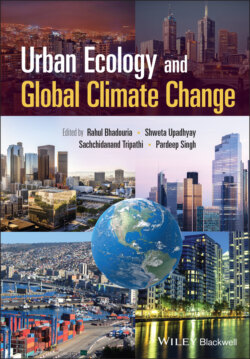Читать книгу Urban Ecology and Global Climate Change - Группа авторов - Страница 35
1.5.4.1 Urban Soils
ОглавлениеThe soils in the urban ecosystems have been extensively modified by different anthropogenic activities which include physical disturbances, waste deposition, filling materials, buildings, and management (irrigation and fertilisation) practices (Lorenz and Lal 2009; Raciti et al. 2012). As like urban vegetation, urban soils are the major storehouse of the C (Liu and Li 2012). Studies report that the urban soil C‐stocks (organic and inorganic) are substantial as observed in the natural ecosystems (Vasenev and Kuzyakov 2018). Interestingly, urban soils contain a massive amount of C locked inside the impervious surfaces which have limited scope for decomposition, thus, act as a potential sink of C‐stocks (Vasenev and Kuzyakov 2018). Moreover, several studies reported that the urban soils have significant potential of C‐sequestration with proper management practices (Wang et al. 2019; Upadhyay et al. 2021). With the increase in atmospheric CO2 concentration, temperature and growing seasons, and management practices, the inputs of C to the soil are also increasing which further improve the soil C‐sequestration potential (Raciti et al. 2012). However, loss of soil organic C as soil CO2 efflux with these changes in the surrounding conditions has also been observed in several studies (Raciti et al. 2012; Upadhyay et al. 2021). Therefore, there is a need to give more research attention on managing the urban soil C‐stocks and improving the ways for more C‐sequestration potential of soils, particularly in the tropical regions.
